An underrated quality of Porsche is how its cars often take well to left-brain dissection. You can justify a 911 quite easily because even though it’s a sports car, you can spec it with tiny, wishful rear seats for the kids or occasional transport of comfort-ambivalent adults. A Cayenne S is simply logical because it’s just about the perfect amount of luxury SUV. The new Panamera GTS, on the other hand, doesn’t make nearly as much sense.
The lineup of Porsche’s biggest sedan has gone all hybrid-heavy, yet this GTS stands out as an anachronism, like using a payphone or burning a CD. It’s all-V8, it physically can’t run Porsche’s latest huge suspension advancement, and in some ways, you’d be paying more for the GTS to go slower than the trim beneath it. Logically, the Panamera GTS isn’t the obvious choice on paper, but that’s exactly why it deserves to exist.
[Full disclosure: Porsche Canada let me borrow this Panamera GTS for a week so long as I kept the shiny side up, returned it with a full tank of premium fuel, and reviewed it.]
Face Shopping
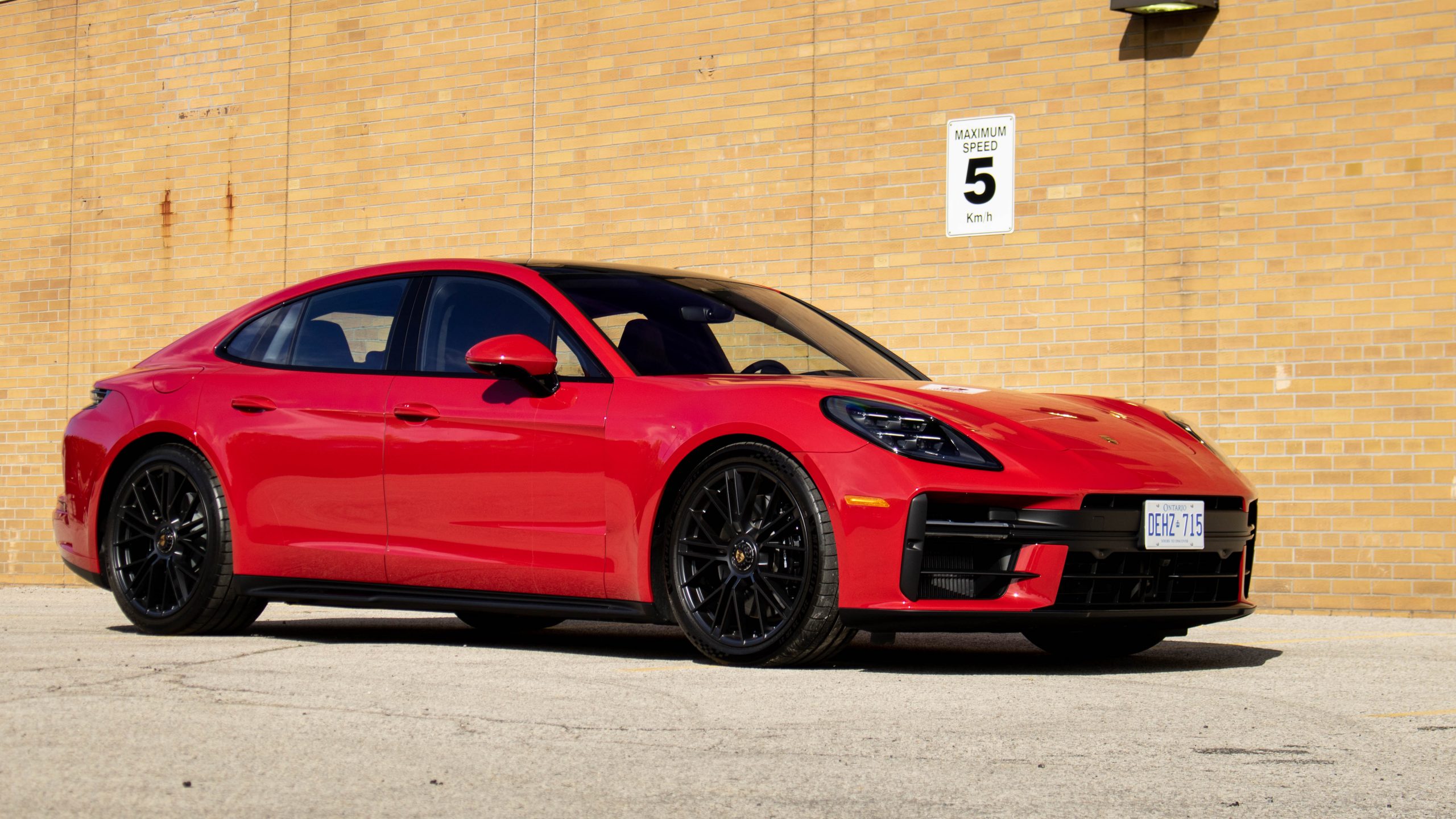
Let’s kick things off with the styling, because the Panamera’s always had a mixed track record. Legend has it, the first Panamera looked unusual because six-foot-three then-CEO Wendelin Wiedeking had some concerns about rear headroom. Fair point, but the second-generation model proved there’s a better way to achieve a comfortable rear seat and a liftback silhouette. The new car keeps the same sort of roofline, but it punches up the rear end nicely with a slimmer Taycan-style full-width taillight, a sharper cut to the quarter glass, and a more subtly defined licence plate recess on the bumper.
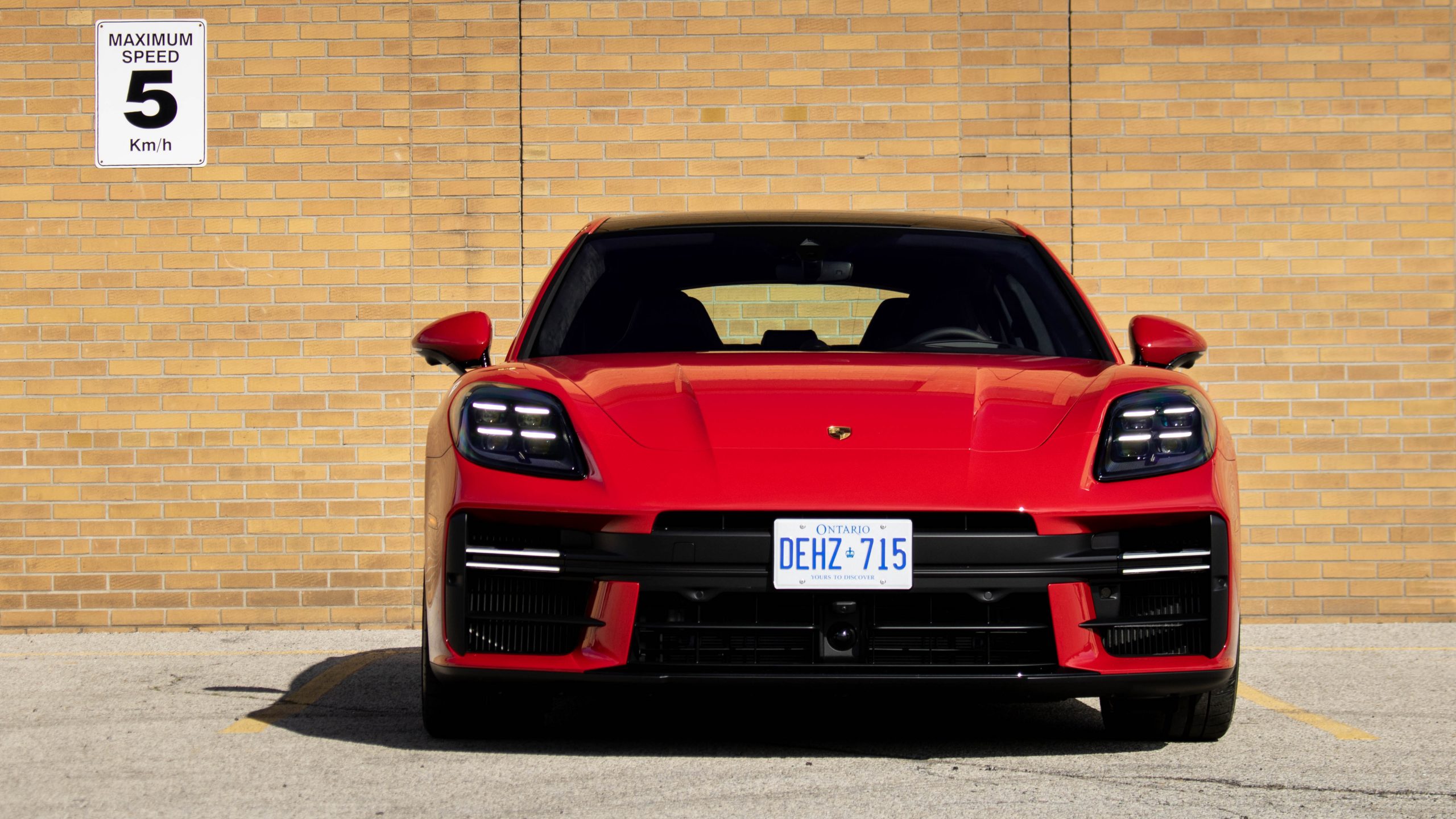
However, we need to talk about the new front end because it just looks strange to me. Perhaps it’s a barrage of little things, like the dark trim bar across the bumper, the fact that the chamfers in the bumper for the inboard corners of the lights don’t immediately harmonize with other elements, or the fact that the new headlights have a lot more mass toward their upper edges than the old ones, all adding up to a car that’s a bit hard to look in the eye. Perhaps we’ll just get used to it, like we did the original Panamera.
Dusting For Prints
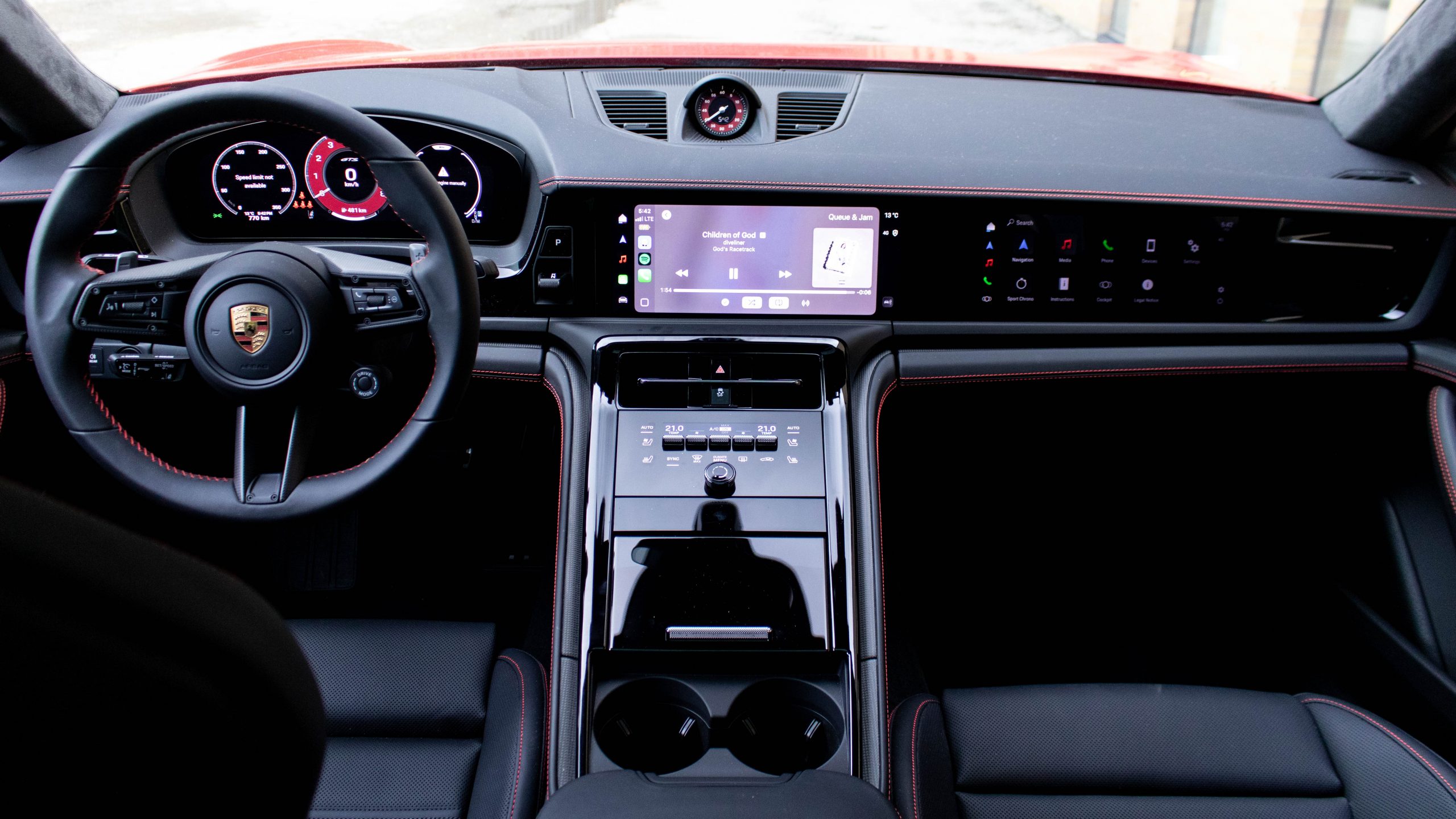
While the previous Panamera was an architectural festival of cool metallic trim and slabs of wood or textured appliques, this third-generation model ditches that for square feet of shiny black plastic accented on this example with nearly-black grey and the thinnest strips of carbon fiber. Gone are two perfectly round individual cup holders with individual covers that sit flush with the console and the wonderfully complex motorized diffuser over the central air-con vents, and in its place is the same fingerprint-attracting stuff you’d find in much less expensive cars. Part of all this shiny black plastic exists to blend in with electronics. The instrument cluster is now all-digital, the start knob to the left of the steering wheel is now a button, and you can spec a screen for the front passenger. However, can’t we have both beautiful materials for traditionalists and the trappings of modernity for those obsessed with the state of the art? The absolutely perfect steering wheel and designer-grade leather shows it can still be done, and richer accents on the console and dashboard would go a long way.
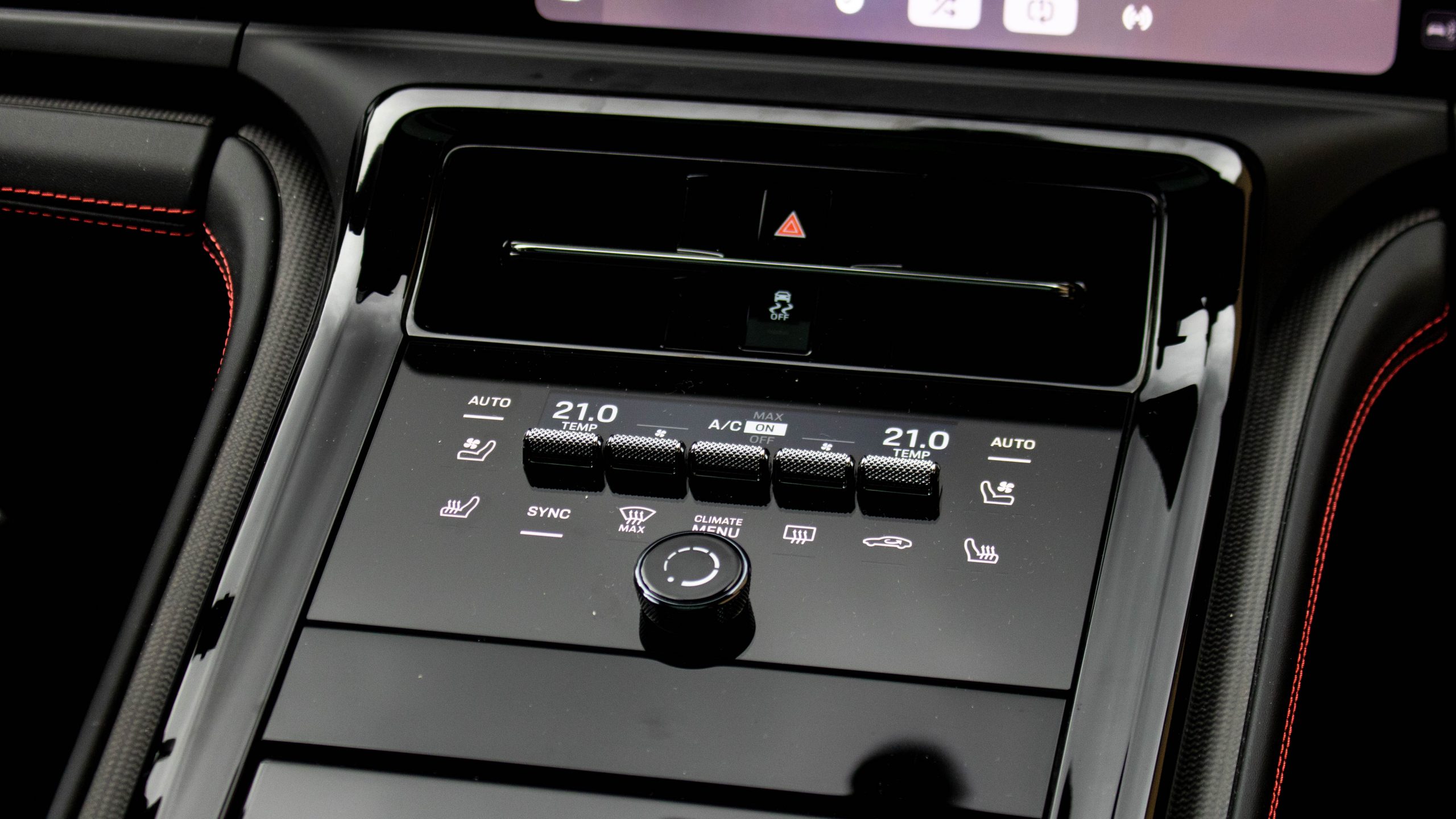
Happily, raising your gaze a few inches brings back some familiarity. If you’ve driven a water-cooled 911, or a Boxster, or a Cayman, the forward sightlines of the Panamera GTS feel like coming home, even if the scale is larger. The same view out over a low hood and two flowing fenders, just sized to make you feel like a kid sitting in a 911 on the auto show floor. The Bose sound system is also something long-time Porsche owners are used to, in that it’s merely okay for the segment, and best enjoyed with all the surround sound stuff turned off. The optional Burmester system should be money well-spent if your everyday carry headphones are more exotic than QC35s.
Eight’s Still Great
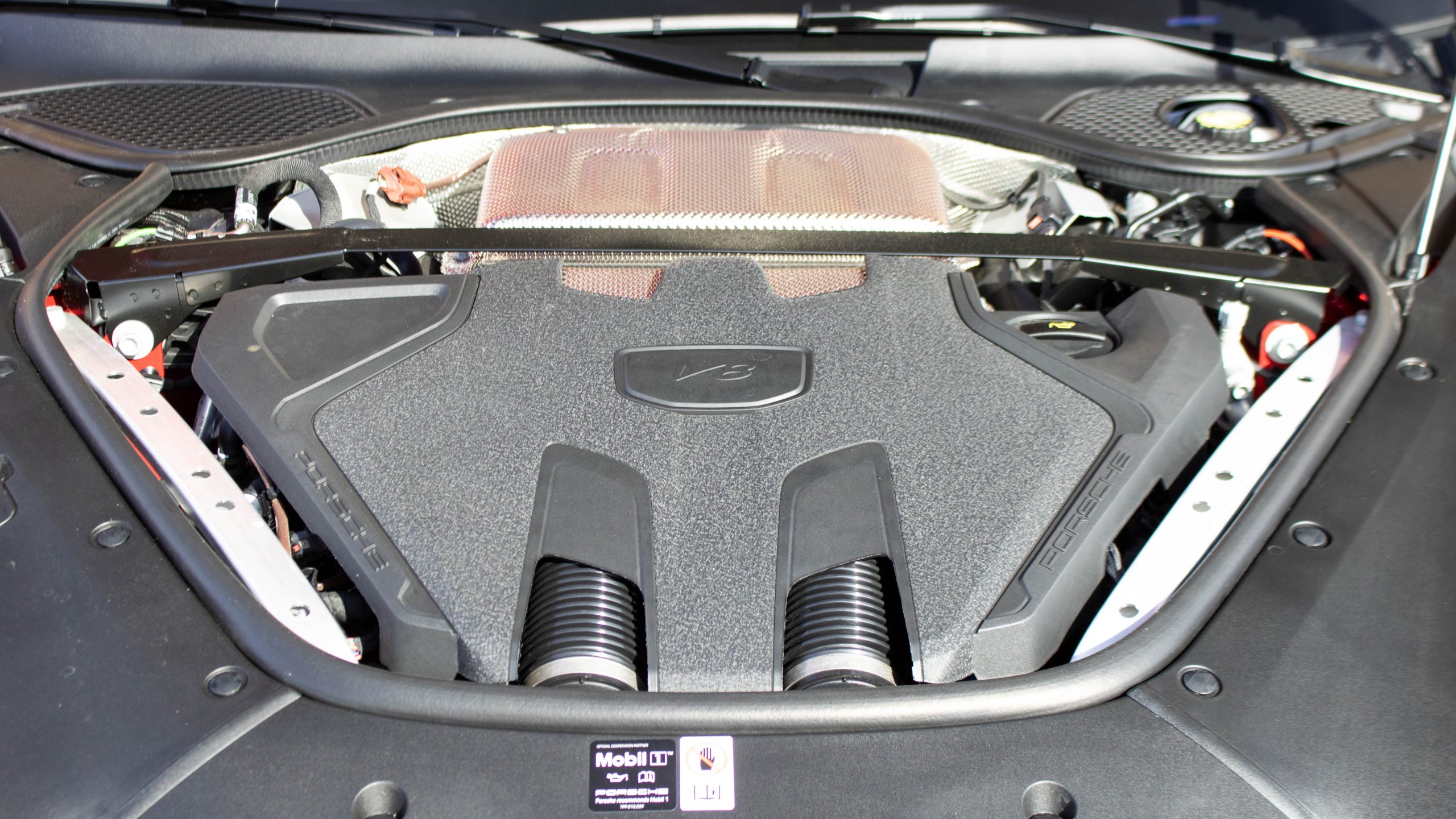
Really, the best sound experience in the Panamera GTS happens when you shut the music off. It comes courtesy of a four-liter turbocharged V8 pumping out a solid 493 horsepower and 486 lb.-ft. of torque, mated to an eight-speed PDK dual-clutch automatic and all-wheel drive. Thanks in part to a proper DCT launch control clutch-dump, light this bottle rocket off and you’ll sprint from zero-to-60 mph in around three-and-a-half seconds or, in damp conditions, watch wheel speeds deviate from GPS indication as the limited-slip differential clinches MVP from the 275-section front and 325-section rear Michelins. If the heavens haven’t opened up or if you’re in a high enough gear, expect whatever’s down the road to arrive in your peripheral vision promptly. I do wish you could spec this thing with something along the lines of the glorious ordinance-offending, eardrum-violating titanium system available on the Cayenne GTS Coupe if you want to cave in the front windows of your hotel when you leave in the morning, but solutions for those who give anything resembling subtlety a one-finger salute are out there.
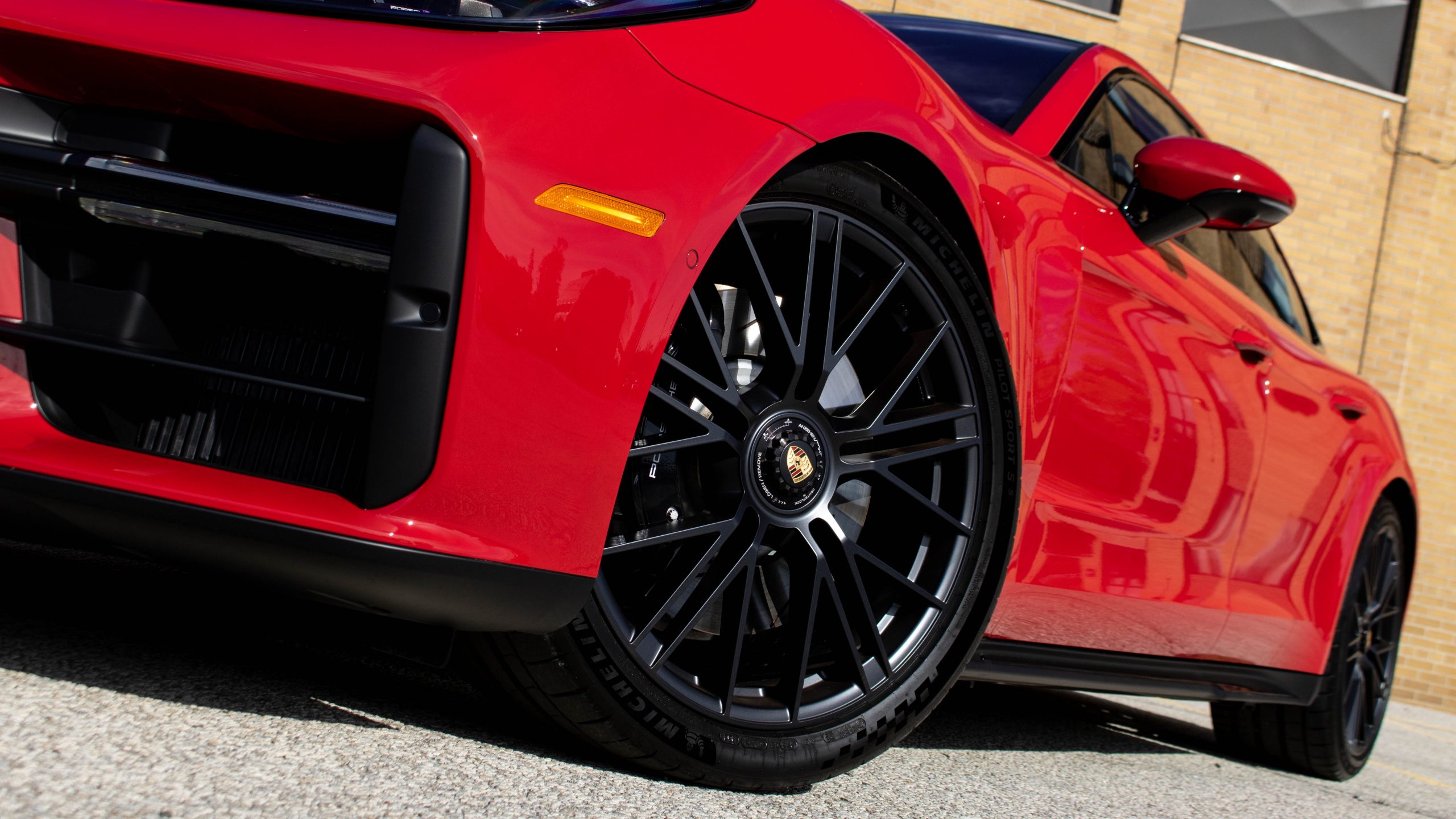
However, it’s not until you hurl the Panamera GTS into a bend at sports car velocity do you really understand what you’re paying for. It’s not that this nearly two-and-a-half ton liftback is as surprisingly glued-down like the index finger of someone who forgot to wear gloves when working with super glue, it’s that it communicates at the limit. You can read just how much grip you have left at each axle by the weight of the steering and faint murmurs from the rear end, proof that this large, heavy, loud-stepping Wall Street chariot spent its summers at Juilliard before going Ivy League. It might spend most of its waking hours behind a Bloomberg terminal, but it still knows ballet. The shockingly natural available four-wheel-steering is only really noticeable near full lock at low speeds, always quietly working in the background to virtually shorten the wheelbase in tight bends and stretch it in high-speed sweepers, and the result is a big car that invites you to a conversation with its contact patches.
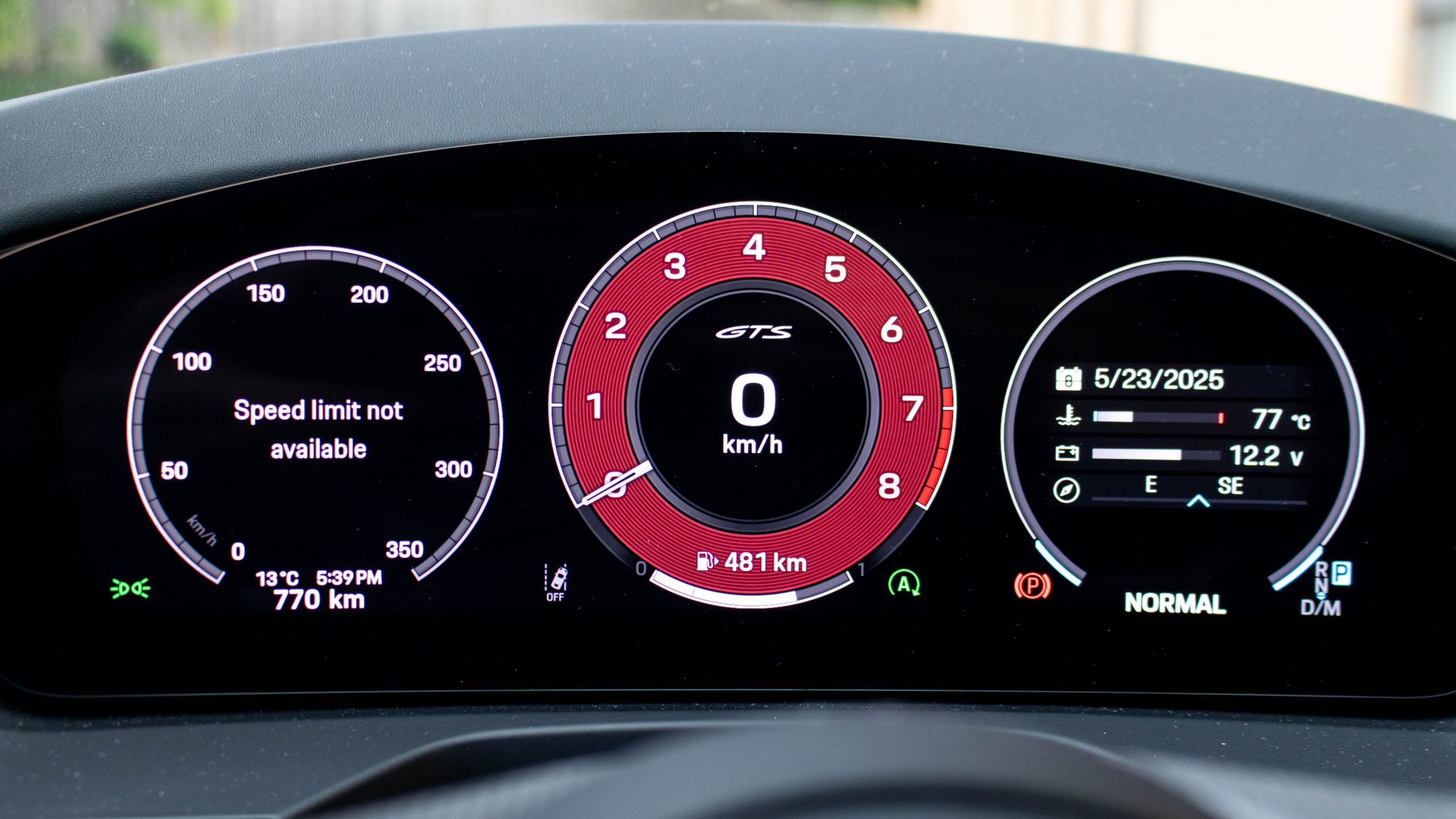
So what price do you have to pay for this sort of chassis tuning in a nearly 200-inch-long, 4,850-pound car? A rather minor one, believe it or not. Even though the taut ride quality is beautifully tuned and the air around the car is impressively muted, the tires are rather pronounced, as both pattern noise and tread slap over road imperfections are on the loud side. If you’re coming from a sports car, you might not even notice. If you’re coming from an S-Class, that’s a compromise you need to be aware of.
Does Everything Actually Need To Make Sense?
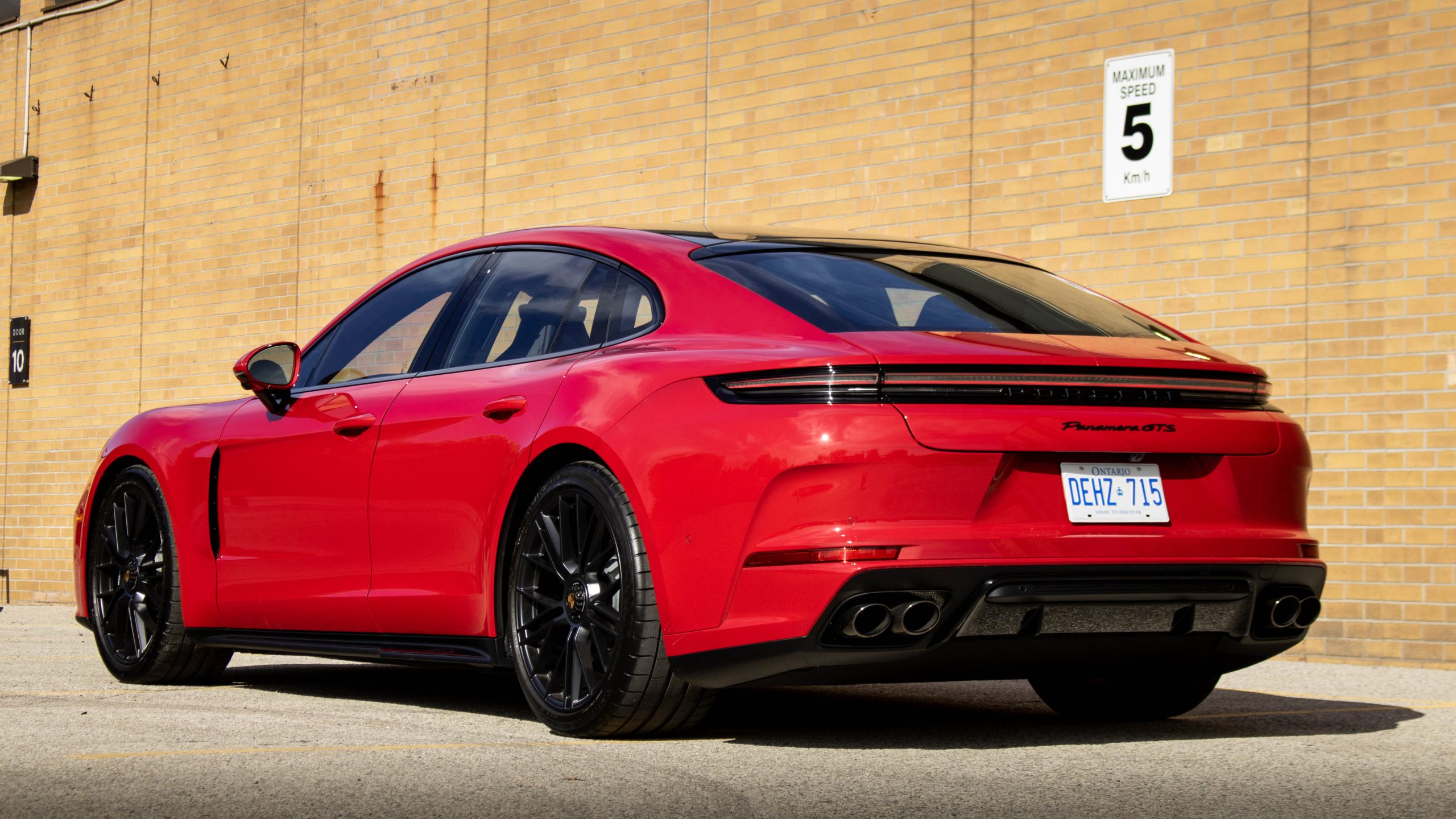
Once the rush of blood to the head subsides, we need to discuss the blinding daylight of dollars and cents. A starting price of $159,250 including freight ($179,150 in Canada) puts the Panamera GTS in an unusual spot, chiefly because of the Panamera 4S E-Hybrid. This electrified model may have a V6 to the GTS’ V8, but the hammer-swing of electric assistance means it’s slightly quicker than the GTS to 60 mph, is available with Porsche’s magic Active Ride suspension that blends the body control of a supercar with the ride quality of a Bentley, and gets vastly better city fuel economy along with the ability to do a Costco run on electric power alone. What’s more, it only weighs 218 pounds more than the 4,850-pound GTS, and if you tick the boxes for a limited-slip rear differential, the incredible Active Ride system, and Bose audio, it’s five figures cheaper than a GTS.
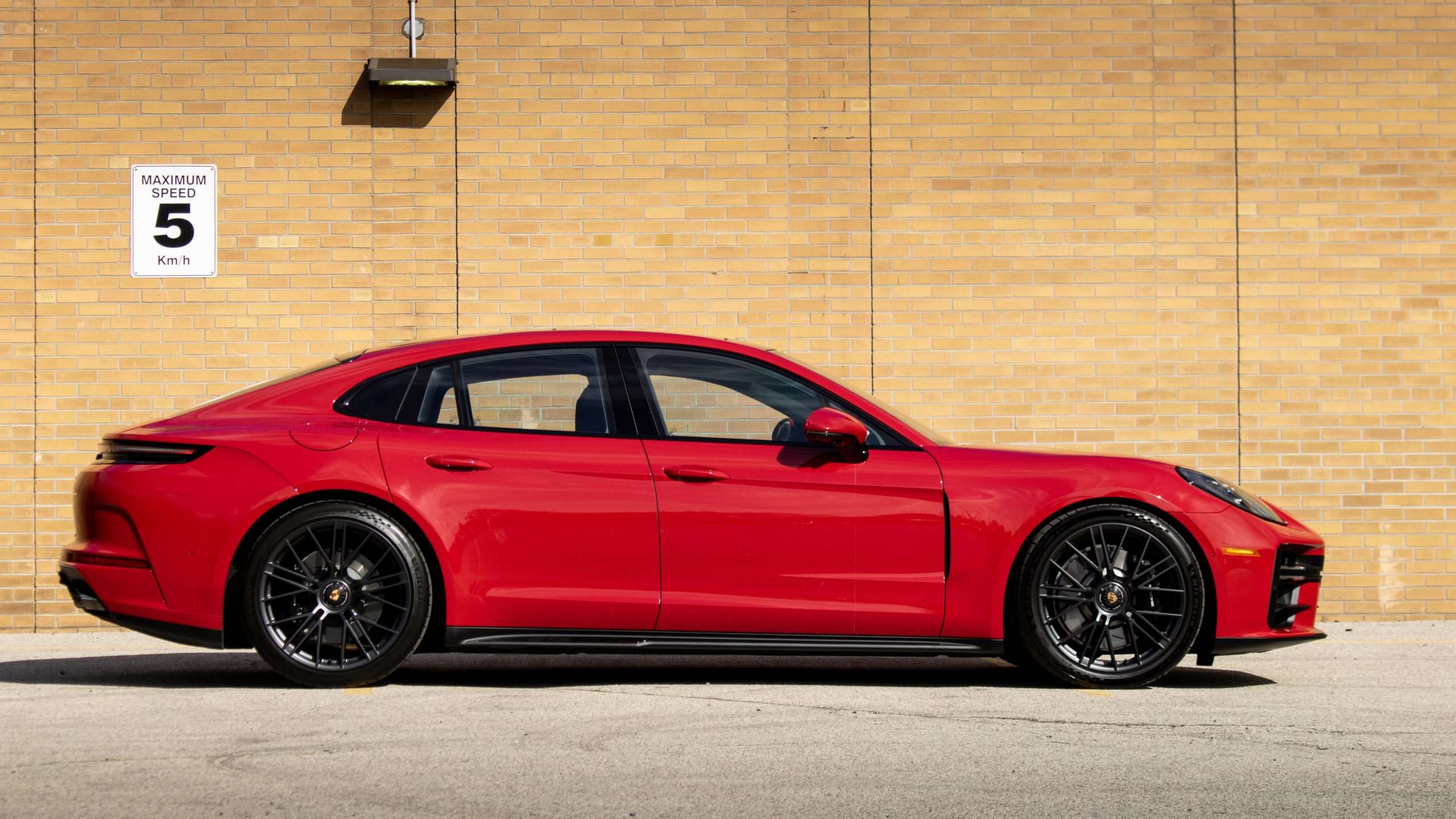
Then again, perhaps if you’re shopping in this price bracket, you aren’t looking for the brashness and the stiffness of a Mercedes-AMG GT 63 4-door Coupe, or the comfort-oriented stiff upper lip of an Alpina B8, or the competence-over-joy nature of an Audi RS7. In many ways, the new Porsche Panamera GTS is a Goldilocks car, a balance between eagerness and restraint, comfort and sharpness, all for the person with old-school beliefs of what should be under the hood of their executive express. Then again, a certified pre-owned previous-generation Panamera Turbo S costs about the same as a new Panamera GTS, and while it’s a shade off the new car’s sharpness, it’s more rapid, has richer interior accents, and could even be had as a wagon.
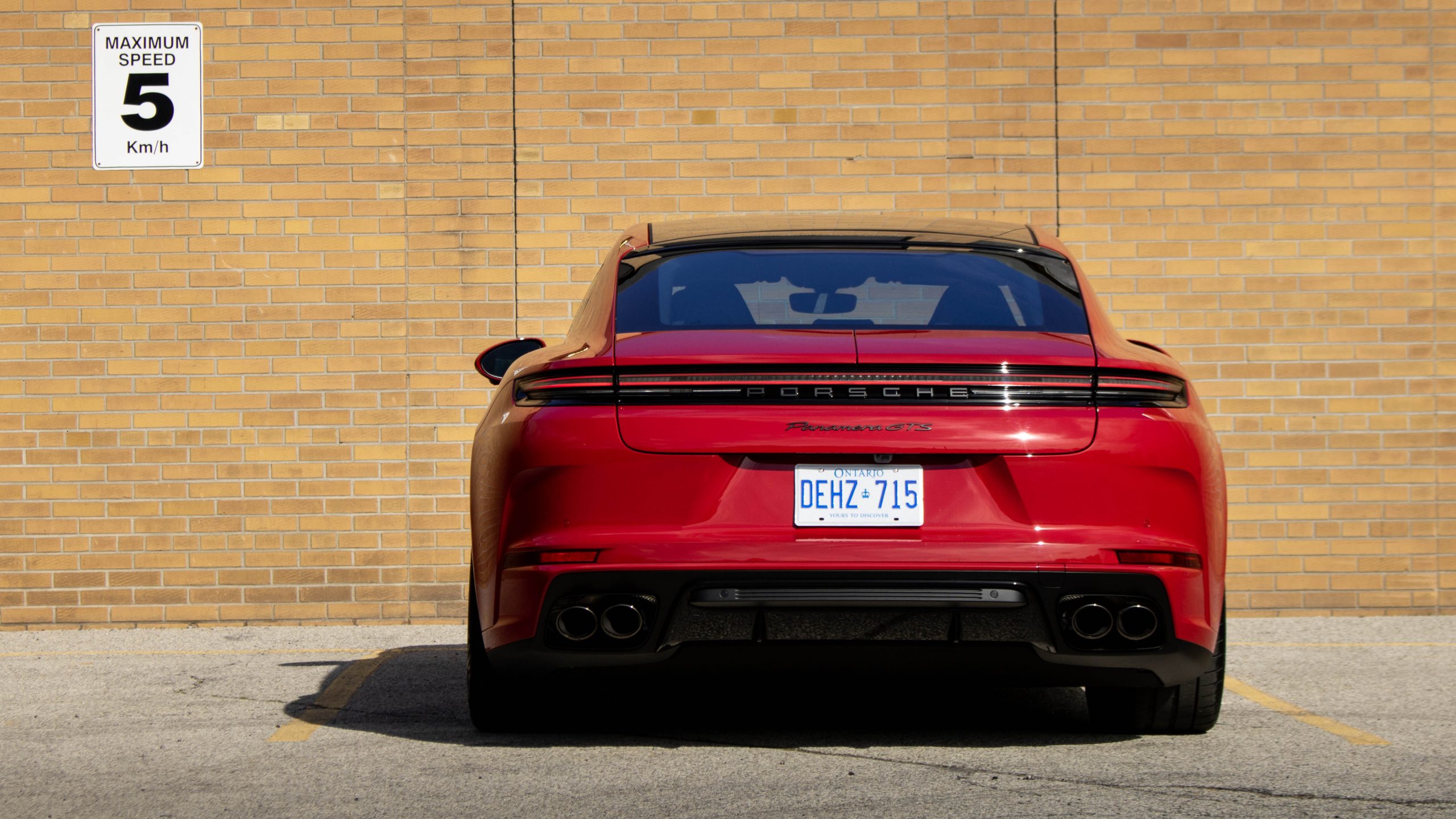
I guess we’ve come full circle, right? The 2025 Porsche Panamera GTS is a difficult car to rationalize, but cars in this echelon often are. Instead, it fulfils a desire to have one last V8 romp before everything of this size and shape becomes a hybrid. Do I wish it had a more gorgeous interior and a cleaner down-the-road graphic? Sure, but the fact that cars like this are still sold new feels like a miracle in itself. Even though I’d likely be swayed by a well-specced 4S E-Hybrid, this all-combustion beast made me grin, and for some drivers, “because I like it” is a good enough reason. Just imagine how mean life would be if joy couldn’t be had purely for the sake of it, and suddenly you’ll realize why the Panamera GTS exists. Cross-plane crank V8s feel good, and sometimes that’s what it’s all about.
Top graphic image: Thomas Hundal
Support our mission of championing car culture by becoming an Official Autopian Member.






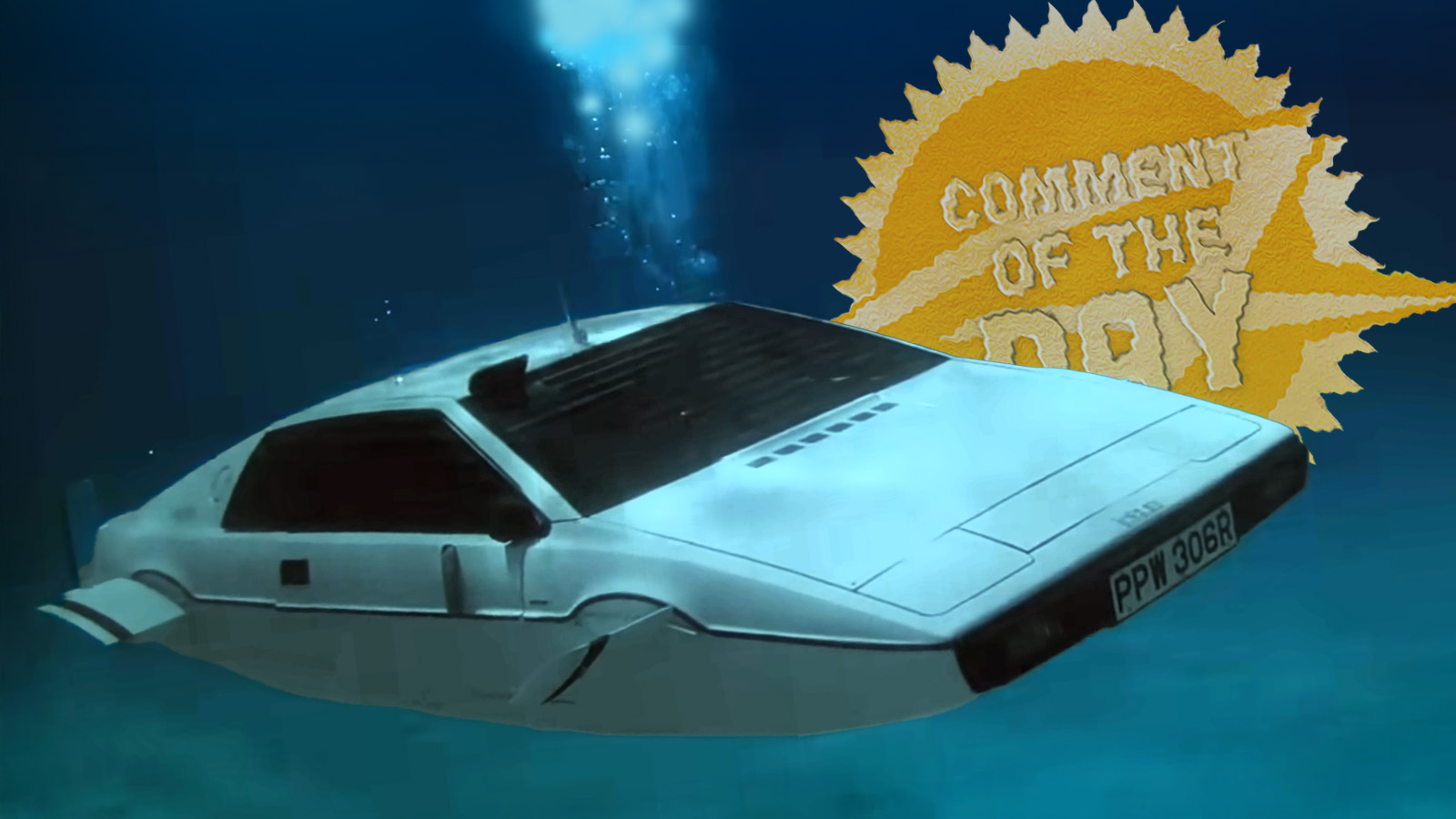


Hard nope. The red tach reminds me of the hideous Oklahoma license plate design from yesterday. Perhaps it’s customizable. Doesn’t matter. I can think of better ways to spend that kind of money. An Audi A7 for roughly half the price seems to be more prudent. For me at least.
I want to like this thing… but they really need to make an AFFORDABLE wagon version. Audi has removed most of it’s wagons, and now has the RS6 for the tasteless 1%r’s that love fake plastic grills, fake plastic diffusers, automatic transmissions, etc. BMW’s M5 touring is outselling the sedan, so again, THERE IS A MARKET FOR HIGH PERF WAGONS, OBVIOUSLY.
But for some reason Porsche made wagon version of this thing eye wateringlying expensive. Like WAYYYYY more than the sedan.
What? The old Panamera Wagon was only a $1000 premium on the sedan. And for the Taycan there is no premium at all(only catch is that both can/could only be ordered as wagons at a slightly higher than base trim). But still, the base 2023 Panamera started at $93k and the Sport Turismo at $104k, which is only 12% more and Porsche doesn’t sell many 0 option base cars anyway.
Volvo is the worst offender in wagon tax, especially since the 2023 S60 Recharge was a $53k car and the V60 Recharge started at $71k – a 33% upcharge, and although it is a higher trim I don’t consider it the same as the Porsche as it gets absolutely no performance improvement other than brakes, and for someone shopping a $50k car $70k is not really a reasonable ask. For someone shopping an $90k+ car an additional $10-20k is a much smaller leap. Also, even regular S60 to V60 CC is $42k to $49k, a 17% upcharge.
Blame it on the insane insistence of complying with FMVSS. It costs about $40 million to certify each body type regardless whether they share common engines, gearboxes, suspension systems, etc.
How to amortise the cost? Raise the price for smaller volume.
FMVSS is on of the worst parts of being American. Well, other than a lot of the other things that are even worse…
I have no comment on the article as a whole, but I do have to comment that based on my neighbor’s new (to him) Cayenne Turbo’s black plastic-fantastic interior, the dash and console will not only look like crap unless you continuously clean the finger prints but the glare from the sun will hit you all the flipping time because of the heavy use has the plastic at all angles. Porsche really needs to stop with the glossy plastic.
Yeah, there’s no need for such cheap materials inside at this price point.
Why does this weigh 4850 pounds? Massive weight gain is a problem across the industry but Ze Germans are far and away the most egregious offenders. There isn’t a single goddamn reason for this to weigh more than 4,000 pounds. This is nearly 300 pounds heavier than a Charger Hellcat for fuck’s sake, which is built on a platform from the 90s. How?!?!
You cannot engineer your way around weight. And yet somehow the interior has been enshitified. Now six figure cars come with plastic, haptic interiors that wouldn’t be middle of the pack in the friggin compact crossover class. My MK7.5 GTI had a nicer interior than this and I paid $26,500 for it.
I’ve driven a first gen Panamera and that interior feels like six figures. Everything is covered in leather, all the switches feel high quality, there’s barely any plastic, and there’s a goddamn shift lever as god intended. Anyway, Porsche has made the car uglier, heavier, given it a worse interior, and are charging more for it.
It’s no wonder they’re struggling. People will only pay so much for a badge.
The Charger and LX cars were not built on a platform from the 90s. They used some remnants of W220 and W210 suspension and a bit of floor pan philosophy, but were fundamentally a new platform when they were introduced and were quite a bit more current than some contemporary cars at the time.
Switch it from 90s to 2000s and the point still stands
I had the exact thought about weight. Seems unjustifiable. Unfortunately I have almost no experience with Porsches, so I cant speak to the interiors. Certainly seems like you’re right though.
Safety reasons? Only way a vehicle can withstand the various crash tests is with more weight, maybe.
Which, come to think of it, works against better mileage and better performance.
Were I in the market today, I’d probably get a replica 356. Nice low weight. Would be an added car, not a replacement.
Apparently the German car companies didn’t get the ‘simplify and add lightness’ memo. Oh well, it’s still lighter than an M5, so I guess that’s something.
Not much, but something.
I happen to mostly like the way this looks, however, and I wonder if Ford will ever make a four door (not Mach E) Mustang at a fraction of the price. They would totally steal tens of customers from Zuffenhausen.
A liftback Mustang with similar proportions could very well be enough to save the struggling S650. Allegedly Ford showed pictures of a Mustang sedan to dealers and there’s been a CT4V BW on one of Ford’s test tracks, so there’s a lot of smoke at this point but sadly no concrete information. The ICE Charger is also supposedly going to exist at some point but I’ll believe it when I see it.
With the exception of the GTD (which really doesn’t count since it’s over $300K), Ford hasn’t come out with anything interesting lately, and I certainly hope they aren’t planning on resting on their recall-addled laurels. They’ve cut a bunch of models but have announced no replacements. They made a big deal about the new Expedition but it’s too damned expensive to buy or lease. As a dealership employee, I’m sensing a certain amount of stagnation.
Anwho, that’s a long-winded way of saying I hope Ford gets off their duff and makes it already.
It just seems like a throw over home plate, especially considering they already watered down the brand/upset the boomers by calling the Mach E a Mustang. Might as well go for it at this point.
The previous-gen Panamera Turbo S is also a PHEV, though with less electric range than you’d hope.
Confusingly, the outgoing Panamera briefly offered two Turbo S variants simultaneously, one with just a 620-horsepower turbocharged V8 and one E-Hybrid model with plug-in assistance. The E-Hybrid electric range was definitely a bit disappointing though.
If I’m stuck with an all piano black dash, I’d rather get a Taycan. I think it looks better and more coherent, and somehow looks more lithe and less thick/chunky even though it’s a BEV.
Echoing my comments on a recent BMW article, I strongly question the virtues of performance sedans/wagons vs performance SUVs if the former are going to weigh 5000 lb anyways. I hate to sound like a broken record, but this car weighs 700+ lb more than a CT5 Blackwing that’s more or less the same size.
If you’re going to end up with a road crusher anyways, you might as well just get the more cohesive styling, added cargo room, and more usable ride height of the Cayenne.
Yep, and that’s the unfortunate logical end to almost all wagon vs crossover discussions now, too. If there’s no meaningful gain in efficiency or performance for the car, why would anyone not choose the bigger car? (and by bigger, I mean taller, with generally the same footprint)
The car lover in me hates this calculus, but there’s no fighting it. A couple extra hundredths of a G on the skidpad, or a fraction of a second quicker to 60, isn’t going to sway most buyers in exchange for twice as much useful interior space.
In typical German fashion an RS6 Avant weighs 4,982 pounds. An SQ7 weighs 5,291 pounds, has the same engine, more usable space, and costs $30,000+ LESS. An M5 somehow weighs 5,390 pounds. An X5M is all of 65 pounds heavier, not saddled with a bunch or superfluous hybrid stuff, and has more usable space.
What’s the fucking point of the cars? Unless you’re going to be tracking them seriously, which approximately 99.9999999999% of people buying $120,000+ luxury daily drivers will not, they offer virtually no advantage other than being able to be a smug enthusiast and go “I got the car because I’m a person of culture and I HATE crossovers”.
Why is it that a preference for car based proportions makes me smug? I don’t like Crossover proportions compared to Car style proportions. Lowering a Cayenne doesn’t suddenly make it look like a Panamera or a Taycan. But apparently the only reason to like the cars isn’t because I like cars, but because I hate crossovers? All these responses to V10mous seem to believe that rationality is key when buying $120K cars, which we all know is nonsense. The advantage is aesthetics, a huge part of every car purchase ever made.
To each their own. Personally, I far prefer the styling of the Panamera. I find Cayennes to be visually… completely unappealing.
The Panamera offers 47-53 cubic feet to the Cayenne’s 60. Sure it’s more… but… so what? The question is “what’s enough?”
And ride height? The question again is “what’s enough?” I have no need for the extra ground clearance. As long as it can handle the occasional gravel road… I’m fine.
To each their own indeed.
I load kids into carseats in my vehicles and live where it snows a lot. Higher ride height is valuable to me and when the performance delta is so small, the sedan makes little sense. I’m willing to put up with some sacrifices in a 3000 lb coupe; much less so a 5000 lb pig.
Which is fair. I can appreciate the car seat argument. The snow not so much. Unless plowing is lacking. I rented a 3-series wagon and drove it through the mountains in Germany and Austria for a week last January. Not once did I think “I should have rented something with more ground clearance.”
My driveway/road is plowed precisely when I decide to do it. Ground clearance matters to me.
While I can’t necessarily argue about cohesive styling on the Panamera vs the Cayenne, I don’t understand why because you would prefer the SUV in an apples to apples discussion, you think everyone else should too. I don’t WANT to drive an SUV. I prefer the ride height and proportions of a wagon over an SUV. Even if there were no compromises of any kind performance wise, I would take a Panamera or Taycan wagon over a Cayenne, every time.
Yes, cargo room is a reasonable argument for those who need it. But I contest that the Cayenne is a “more useable ride height” unless I plan to drive my parents about. Otherwise, there is nothing about sitting inches lower that I consider less useable. I’ve been daily driving 3-4 inch lowered subaru wagons for the last 10 years+. Before that was a lowered Protege 5. I have never once been like “damn I wish this car had a higher ride height.”
I mean, every comment I make here without clearly objective facts is ultimately my opinion.
That opinion is that a 4850 lb “sports” sedan is silly and doesn’t offer much besides downsides compared to an SUV. I explained more details about why that is in another post. You’re obviously free to have a different opinion.
In my own life, I own a sports sedan, an extremely low sports car, and zero CUVs. You don’t need to convince me that sometimes the compromise is worth it. On something like this, it isn’t, at least to me.
Absolutely gutted the Panera Panamera Panorama didn’t make it into the article photos
Not to mention the Panama Panoply Panache.